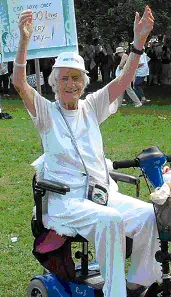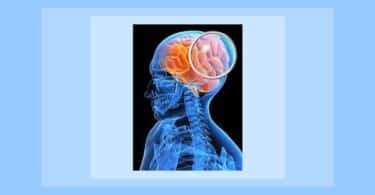It has been said that death is the last obscenity. Certainly in much of our world it is seen as only negative and the medical profession and many others seem to see the death of a patient as failure. This could be a reason why both geriatrics and gerontology are not fashionable disciplines. But can there be anything more honourable than being involved in helping someone as they prepare to make that great journey from this reality to another?
What follows is the account of such a journey. It is about far more than homeopathy. I believe it demonstrates the way in which a truly homeopathic understanding of life, disease and death can help at what is one of the most important borders we will ever meet.
Parkinson’s and related disorders
The patient was 84 years of age. She had been affected for a number of years by an extra pyramidal disorder often described as Parkinson’s disease. True Parkinson’s disease is characterised by a failure of the body to adequately supply dopamine, a neuro-transmitter that enables information to be passed across nerve pathways. Onset is frequently during mid life and usually manifests with symptoms on one side of the body initially. In old age, often similar symptoms are observed on both sides of the body and the underlying pathology has more to do with the wearing down of the nerve endings making neurotransmission more difficult. In the former situation, I have seen significant improvement in homeopathic patients. The remedies most often indicated and beneficial have included causticum, mercurius, manganum, as would be expected. At the moment I am seeing a case where plutonium nitricum may prove an interesting addition to this list but it is too soon to talk about. Where the pathology relates to the wear and tear of old age, it is however, much more unlikely to see significant improvement, although there are good chances of enabling a slowing down and even a cessation in the normal progression of disease. Indeed, in this case the patient had remained active for several years longer than might have been expected with the help of homeopathy, nutrition and exercise, including yoga.

The patient at a trade justice rally
One of the difficulties which these patients may experience is in the swallowing and gagging reflex and this can result in food entering the lungs. Shortly before the beginning of this story, the patient had developed aspiration pneumonia arising from this problem. Prior to this she had been very well, within the limits of her disorder. (She was still able to: go out for walks, including on her own, use a mobility scooter for longer trips; take an active part in a variety of study groups; look after her own care; and so on. This was relative freedom, bearing in mind that the neurological consultant several years’ previously had expected her to be fully bedridden within months.
Carboneum Sulphuratum
The most important remedy for her during this time was Carboneum Sulphuratum. This remedy is one of those polychrests which have gone unrecognised. An understanding both of the major importance to our materia medica of sulphur and of the very many major carbon remedies, as well as the great importance given to carbon in Scholten’s work on the table of elements and the prominence given to the petrocarbon remedies in recent work should have made this clear. The best classical source for a full understanding of this remedy remains Kent’s Lectures on Materia Medica.
Symptomotology
In this case the relevant symptoms included:
- a degree of anaesthesia of the extremities alternating with cramps
- occasional sciatica more often in the right hip
- unsteady walking, with tottering with weakness of the legs and numbness.
The remedy has an interesting symptom described as “doesn’t know what to do with her hands.” This patient had always been shy in company and this could lead to a degree of awkwardness. This combined with the neurological disorder lead to a tendency to drop things. She described the sensation of not quite knowing what she was doing. Her sight had always been rather weak. The neurological damage resulted in a degree of confusion of sight. Pyramids in her glasses did aid this. But it might be noted that this remedy also has a number of symptoms of cloudy vision, asthenopia, etc.
The remedy also has quite a degree of dryness, a long-term characteristic of the patient. Indeed it might be noted that she had, in her 60s benefited tremendously from Bryonia for a number of recurrences of tick bite fever, for dry pleurisy and some years later for dysentery. “Bryonia cures dysentery with all the taormina and tenesmus possible to imagine, with pain in the abdomen; with bloody and mucous discharges.” (Kent Lectures on Materia Medica.)
From hospital to home
At the time we join the patient, she had aspiration pneumonia. She was in hospital at this point because she needed oxygen, a food and liquids drip, and other support. She was not expected to survive. However the patient was determined to go home. Over the next week or two, she accepted conventional medical help and had some useful assistance from a speech therapist for the gag reflex while at the same time taking homeopathic remedies as needed for the acute states as they emerged. She returned home needing full care as she could not find her balance to stand and was therefore confined to bed and armchair. She seemed very well and happy in herself. On the Friday, with the aid of equipment she stood for the first time and was very excited by this. However on the Saturday morning she suffered a deep stroke. She was given Arnica at the time. She regained consciousness and full awareness and was able to talk and to move one side of her body. At this point she stated that she had struggled enough. She said that getting home had been a big struggle. She was ready to die now.
Patient comfort
The patient had no desire for any further medical help unless it contributed to the completion of her life, so that she could die and move on to the next place, and kept her comfortable and compos mentis. Her family were able to be with her in her own home. The doctor was puzzled since she asked him what she had to do to be ready to die. Her family felt sorry that GPs are not better taught about the philosophical and psychological aspects of death and dying. The only treatment she had at this point was a continuation of the use of calendula to heal skin at the perineum arising from pressure due to her immobility. The patient was calm and pain free and merely expressed the need to explore what needed to be completed. She did bed yoga exercise with the active side of her body, and these were also done passively for her with the stroke-affected side.
On the third day she received the blessings of her faith, shared memories with her family and discussed the details of her funeral and life celebration. She then fell into what appeared to be a natural sleep. The next morning it became clear that she was in fact in a light coma. From this point on, all understanding of her state of mind became dependant on the abilities of those close enough to her to read her thoughts. With an established relationship of over 25 years behind us, my communication with the patient was no longer always verbal, so I relied a lot on instinct and of what I was aware of within myself.
Trauma and resolution
The patient was being rubbed with vinegar on tissues to sustain her comfort and hydration levels, in the absence of a drip. I became aware of an internal agitation. I knew of the major trauma in her life: she had been married, many years before, to a man who subsequently tried to kill her and was diagnosed as schizophrenic. This man had earlier serially sexually abused one of more of their children. He was now dead. I became aware that she was feeling uneasy about something she would have to deal with after death. Gradually it became clear that she was wondering about how she would behave if she met him after death, how she could be appropriately angry. She had always suppressed her anger, so deeply that at times she had not even been aware of it herself. But in more recent years she had been more in touch with this emotion and had tried to experience and explore it. One of her daughters had found her mum very difficult to relate to because she felt the patient had not protected her sufficiently. They had been estranged for a period as a result, although a reconciliation had been achieved.
At this point gathered round the bed, the daughters became aware that something was disturbing the patient. With difficulty, I explained that she was struggling with what she would do with her anger when she met her husband. The stress of anger could at this point be seen in her face and her hands. Staphisagria 30 in liquid potency was applied to her wrist pulse points and she returned to the calm state she had been in previously. But maybe at least as importantly, the daughter who had been estranged said ‘So she was angry; I had never been sure’ and began to weep, her whole demeanour relaxing. Her own daughter responded by hugging her, and she remarked, “I wasn’t there for you either, when you were in your teens,’ recognising the way her abuse had influenced her own parenting. The reconciliation was complete: grandmother to mother, mother to granddaughter. As the morning continued it became clear that gradually all the family were being enabled to release their tensions and disagreements as the patient moved nearer to death.
Death comes
A while later it was this same daughter, at last able to be comfortable with her mother, who sensed that she was at the edge of death but was now being held back by that most human of all fears, the fear of death itself. The patient’s pulse was slowing and intermittent, there was a change in the breathing and a slowing heart rate. A couple of times it seemed like she was going, but she didn’t. At this point, the patient was given a few drops of Arsenicum 1m in water on her lips, using a cotton bud. We watched as her whole body relaxed, and more even breathing slowed and slowed further. A tremendous sense of lightness and hope seemed to come to all of us as she passed over to new life.






Excellent – very informative.